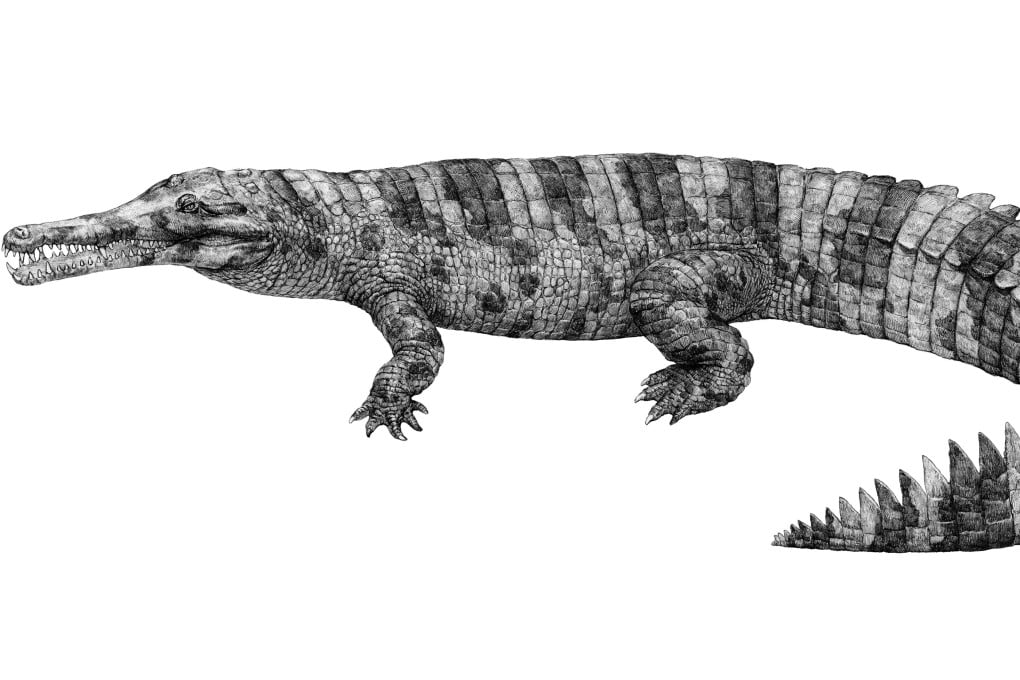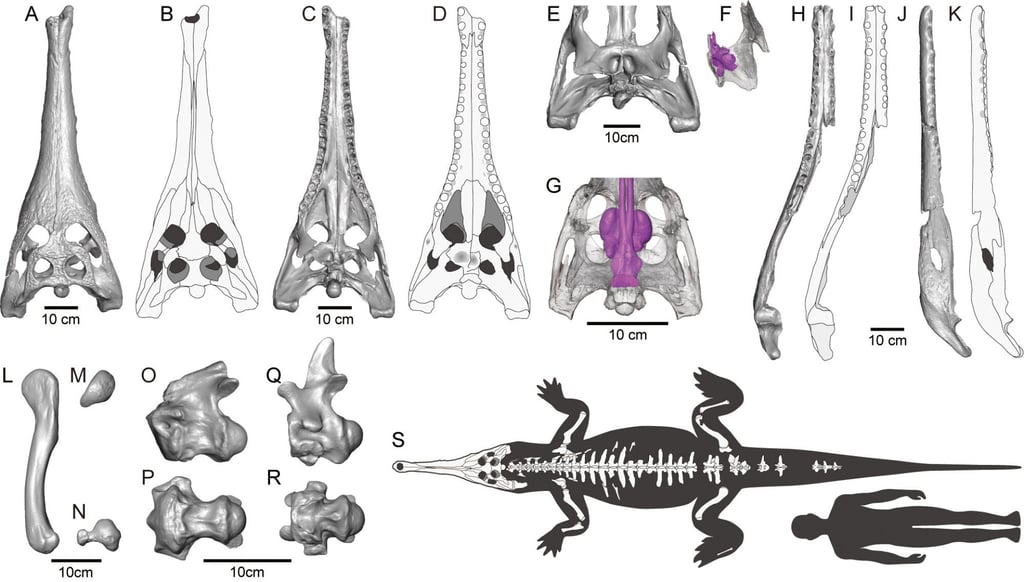Chinese may have hunted ‘unique’ giant Bronze Age crocodile species to extinction
- Subfossils of fish-eating crocodiles show signs of ‘vicious attacks’ and ritual beheading, says team behind recent study
- Scientists name unique species after Tang dynasty poet and legendary crocodile hunter

The remains are from a hitherto unknown species of gharial, or fish-eating crocodile, and they also bear the marks of ritual beheading, according to the scientists. Discovered some half a century ago in the Pearl River Delta, the fossils are now preserved in museums in Guangdong.
The animals are believed to have been 6 metres (20 feet) from snout to tail and the top predator in their environment.
Analysis of bone remains shows the two reptiles suffered “vicious attacks” and had been “ritualistically beheaded”, possibly with an axelike weapon, the team said in an article published on Wednesday.

“Chop marks [and] historical accounts suggest that the human-crocodilian conflict had lasted in southern China from the Bronze Age until a few hundred years ago when this unique species finally became extinct,” the researchers wrote in their article in the peer-reviewed journal Proceedings of the Royal Society B.